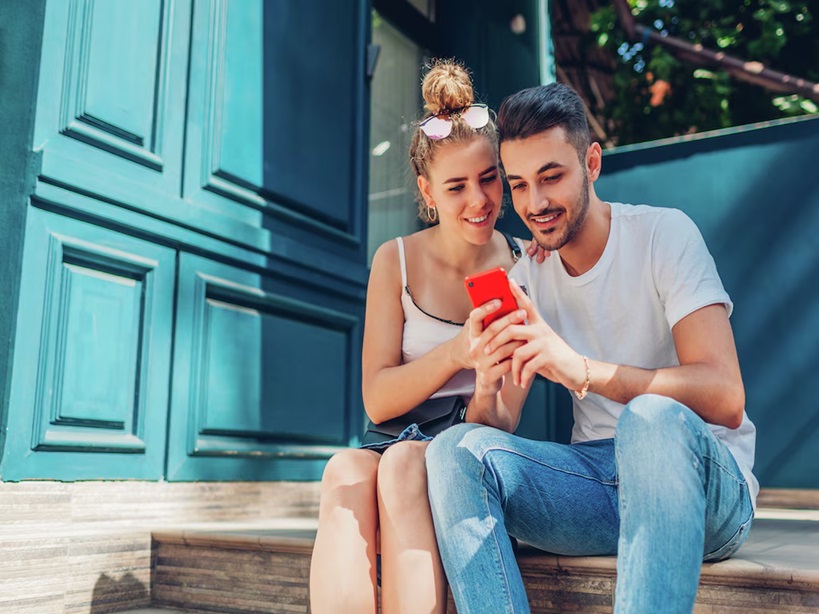Flirting isn’t always about the words you say—it’s often about how you look at someone. Eye contact plays a huge role in building attraction and creating a sense of connection. Among all the non-verbal signals, one stands out: the 3-second gaze. It’s subtle, powerful, and when done right, it can instantly spark curiosity or attraction.
Here’s how eye contact, especially the 3-second gaze, can transform your flirting game.
The Psychology Behind Eye Contact
Eye contact is one of the most instinctive ways humans connect. It’s often the first sign of interest and plays a major role in non-verbal communication. When two people lock eyes, even briefly, it can trigger a release of oxytocin—also known as the “bonding hormone”—which helps build trust and emotional closeness.
Studies have shown that people who make more eye contact are perceived as more confident, approachable, and trustworthy. In the context of flirting, it sends a message without needing to say a word.
What Is the 3-Second Gaze?
The 3-second gaze is a flirting technique where you make eye contact with someone for about three seconds—long enough to signal interest, but not so long that it becomes awkward or invasive. It strikes a perfect balance between confidence and subtlety.
Unlike a passing glance, which may go unnoticed, or a prolonged stare, which can feel intense or unsettling, a 3-second gaze communicates that you’re noticing someone and open to interaction.
How to Use the 3-Second Gaze When Flirting
Using this technique isn’t complicated, but it does require awareness and timing. Here’s how to do it effectively:
- Make eye contact naturally: When your eyes meet, pause for a couple of seconds instead of looking away immediately.
- Hold the gaze for 2 to 3 seconds: Just enough to create intrigue, but not more than that. Keep your expression relaxed or pair it with a slight smile.
- Look away slowly: Don’t snap your head or look down—simply glance to the side. This maintains the charm and avoids signaling insecurity.
- Gauge their response: If they smile back, hold the gaze, or look at you again, it’s usually a good sign to engage further.
Signs They’re Responding Positively
The best part about eye contact is that it often prompts a clear reaction. Here are a few signs that the other person is open to the connection:
- They hold eye contact back and don’t immediately look away.
- They smile or show positive facial expressions.
- Their body remains relaxed or they lean slightly toward you.
- They initiate conversation or return to looking at you multiple times.
These signals suggest that the eye contact was welcomed and might be an invitation to continue the interaction.
Mistakes to Avoid

While the 3-second gaze is simple, it can be misused. Here’s what to steer clear of:
- Staring for too long: Holding eye contact for more than five seconds without a break can feel uncomfortable or intimidating.
- Looking down afterward: This can make you appear unsure or nervous. Looking to the side is more natural and confident.
- Expressionless gaze: A cold or blank stare can come across as intense or even creepy. Keep your face soft or slightly expressive.
- Ignoring disinterest: If they quickly break eye contact, turn away, or seem uneasy, respect their space and don’t try again.
Where and When to Use It
Not every situation is ideal for flirting through eye contact. Use the 3-second gaze in environments where social interaction is expected or welcomed, such as:
- Social gatherings
- Cafés or bars
- Dating events
- Networking functions
- Casual public spaces like parks
Avoid using it in professional settings, public transport, or places where someone may feel cornered or uncomfortable.
Eye Contact Across Genders and Contexts
Eye contact can be interpreted differently depending on gender, personality, and culture. Generally:
- Men are encouraged to use the gaze in a calm, respectful way—too much intensity can be misread.
- Women may find that a confident but playful glance can signal interest effectively.
- Same-sex or non-romantic interactions may follow similar rules, but tone and context still matter.
How to Practice and Get Comfortable
Like any form of communication, eye contact takes practice. Try holding eye contact with friends during conversations, or use a mirror to get used to your expression. Confidence builds through repetition and self-awareness.
You can also pay attention to how others use eye contact in social settings. Notice what feels natural versus forced.
What Comes After the Gaze?
Eye contact is just the opener—it’s not the whole conversation. If someone responds positively, consider following up with:
- A light smile
- A casual conversation starter
- A compliment or question about the setting
If there’s no reciprocation, simply move on respectfully. Not every glance will lead to a connection—and that’s okay.





